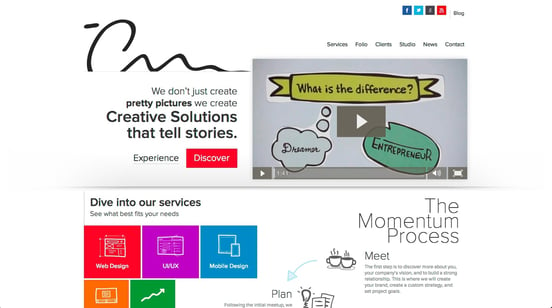Artists have always used it. Photographers too. Filmmakers, architects, and all professionals whose work is visual know the importance of white space. Yet web designers often find themselves having to defend its effectiveness and multiple benefits, even though the importance of white space is a well documented fact.
Many believe that white space is empty space without value, and think of it as idle pixels or vacant real estate. But white space is actually active space, and very effective in many aspects of web design.
Whitespace: Because it Works
The best web design firms incorporate white space for its almost magical ability to pull focus; make a user look at what is most beneficial to a client. White space also makes a website easier on the eye and of higher quality and reliability, and easier to read. It also encourages interaction by using:
- Large wide margins
- Proper height lines and vertical spacing, which encourage reading
- Liberal use of padding for touchscreen taps and easy clicking
Ever seen the way a small portion of food is presented on a large plate at a fancy restaurant? They’re incorporating white space.
The best web design firms know the basic elements of color, shape, sharp images… but they also know that the use of white space is the mark of an expert and key to easy website navigation and engagement. The goal of a marketing website is to make the user take action. Achieve this feat by asking a web designer to use white space that doesn’t draw attention to itself but to that which it envelops and frames.
Fast, Flattering, Forward-Thinking White Space
Web readers are usually in a big rush. By reducing options, white space speeds up what can otherwise be a long interaction process. It also cuts down on the time spent frustrated and confused over where to look and how to take action.
Web designers know that too many elements such as banners and sidebars distract. And just like the sight of a cluttered room or a garden overflowing with plants, an over-filled website can look cheap and untended. That’s why the best web designers use sleek, clean, tidy, elegant white space, if they can talk a client into doing so.
It’s an age-old American battle: we have a hard time believing that less is more and that the invisible matters, even though we exist in white space and our world consists of mostly emptiness. The uphill battle of web designers incorporating white space is a classic case of art imitating life.


